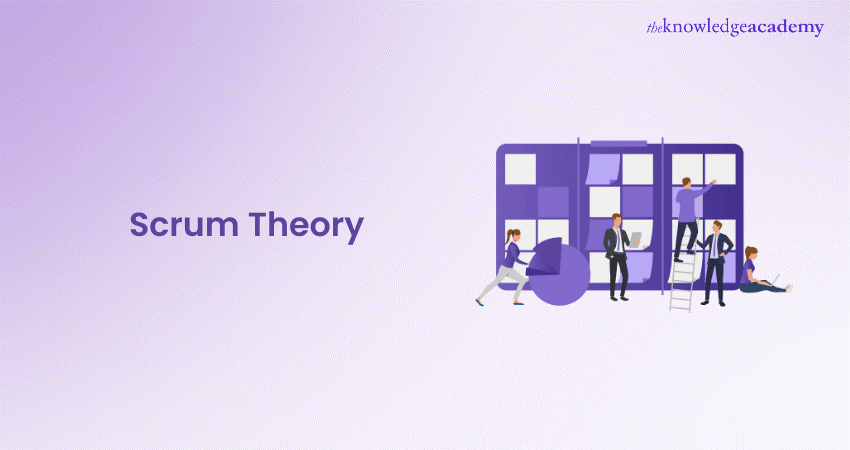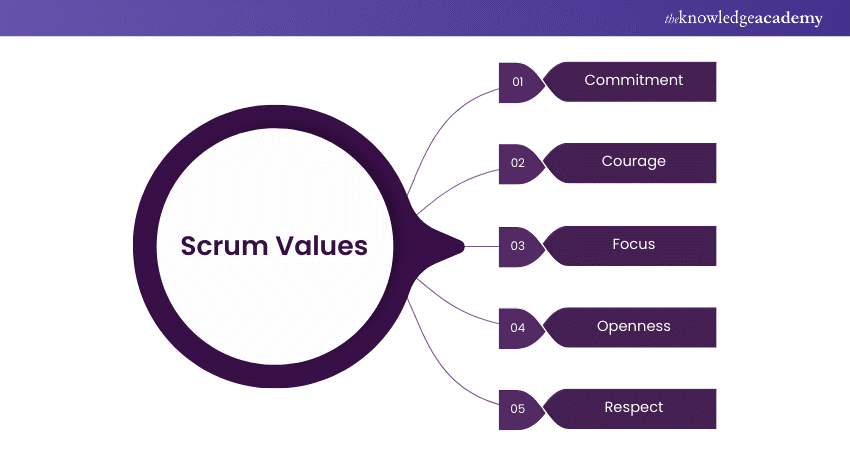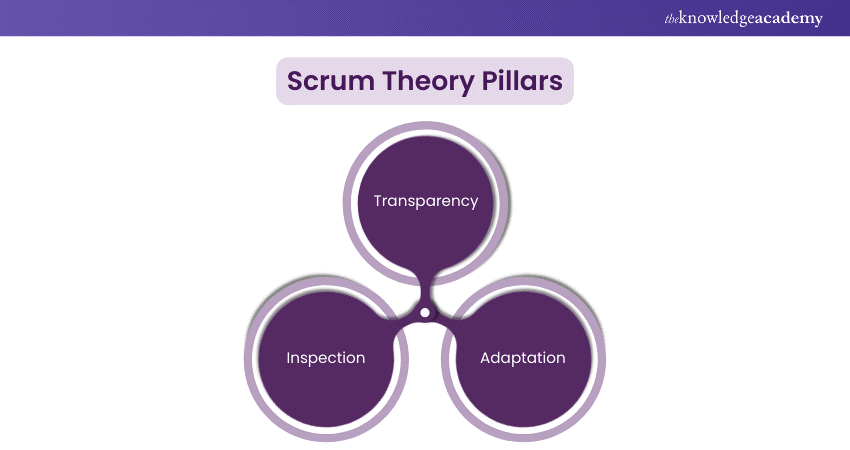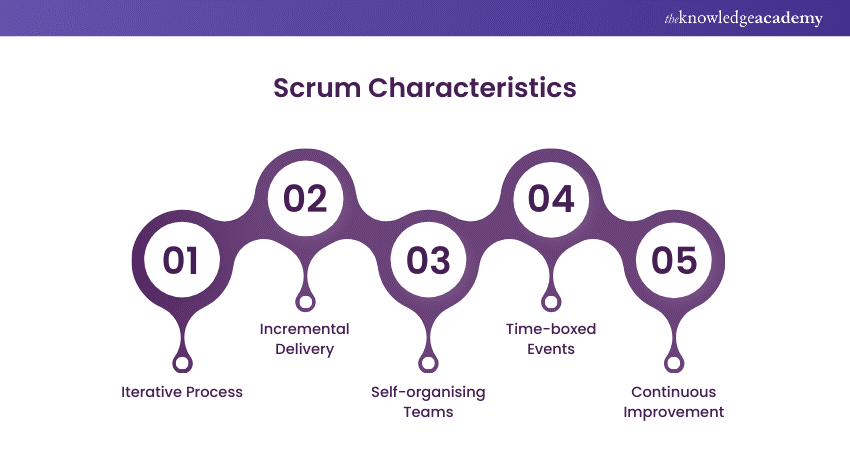We may not have the course you’re looking for. If you enquire or give us a call on +971 8000311193 and speak to our training experts, we may still be able to help with your training requirements.
We ensure quality, budget-alignment, and timely delivery by our expert instructors.

Imagine projects running smoothly, teams collaborating seamlessly, and high-quality products delivered consistently. This is the world of Scrum Theory, a transformative framework for managing complex projects across various industries, from software development to marketing.
Scrum Theory embodies agility, allowing teams to adapt swiftly, innovate continuously, and respond effectively to feedback. It’s like a finely tuned orchestra where every member knows their part.
In this exploration, we’ll uncover Scrum Theory's foundational pillars, core values, and essential roles. By understanding Scrum Theory, you’ll learn to enhance your project management practices, making your team more responsive, efficient, and successful. Let’s dive into the world of Scrum Theory and discover its power.
Table of Contents
1) What is Scrum?
2) Scrum as a Framework
3) Scrum Purpose
4) Scrum Values
5) Scrum Theory Pillars
6) Scrum Characteristics
7) Scrum Roles
8) Scrum Examples
9) Conclusion
What is Scrum?
Scrum is an agile framework that is utlised to manage and complete complex projects. It focuses on delivering small, incremental changes to a product, allowing teams to adapt quickly to changing requirements and feedback, as detailed in the Scrum Master Guide. Scrum is designed to Improve Scrum Team Productivity, enhance communication, and provide a structured yet flexible approach to project management.
Scrum as a Framework
Scrum is not a methodology but a framework that provides structure and guidance for teams to work efficiently. It includes a set of roles, events, and artefacts that work together to help teams deliver value continuously and iteratively. The framework is intentionally incomplete, providing the foundation upon which teams can build their specific processes and practices.
Scrum Purpose
The primary purpose of Scrum is to help teams deliver products of the highest possible value. It achieves this by promoting collaboration, encouraging frequent inspection and adaptation, and fostering a transparent work environment. Scrum enables teams to respond effectively to changing requirements, minimise risks, and deliver products that meet or exceed stakeholder expectations.
Scrum Values
Scrum is built upon five core values that guide the behaviour and actions of the team:

a) Commitment: Team members are dedicated to achieving the goals of the Scrum team.
b) Courage: Team members have the courage to tackle tough problems and make hard decisions.
c) Focus: Everyone concentrates on the work of the Sprint and the objectives of the Scrum team.
d) Openness: The team including its stakeholders are open about all the work and challenges with performing the work.
e) Respect: Team members respect each other to be competent, independent people.
Scrum Theory Pillars
Scrum Theory stands on three Scrum pillars that uphold every implementation of empirical process control:

a) Transparency: All aspects of the process must be accessible to those responsible for the outcome. Transparency ensures that all team members have a mutual understanding of what is being worked on.
b) Inspection: Scrum users must frequently inspect Scrum artefacts and advance toward a Sprint Goal to detect unwanted variances. Inspections are most beneficial when performed by skilled personnel at the point of work.
c) Adaptation: If an inspector determines that one or more aspects of a process deviate outside acceptable norms and that the resulting product will be unacceptable, the process or the material being processed must be adjusted. Adaptation is made as soon as possible to minimise further deviation.
Master Agile Project Management with our Managing Agile Projects With Scrum Training - Sign up now!
Scrum Characteristics
Scrum is characterised by its emphasis on iterative progress, flexibility, and team empowerment. Key characteristics include:

a) Iterative Process: Scrum breaks down work into Sprints, typically lasting 2-4 weeks, allowing for regular inspection and adaptation.
b) Incremental Delivery: Each Sprint results in a potentially shippable product increment, ensuring continuous delivery of value.
c) Self-organising Teams: Teams are empowered to organise their work and make decisions collaboratively.
d) Time-boxed Events: Scrum events such as Sprint Planning, Daily Scrum, Sprint Review, and Sprint Retrospective are time-boxed to ensure efficiency and focus.
e) Continuous Improvement: Scrum encourages a culture of continuous improvement, with teams regularly reflecting on their processes and outcomes to identify areas for enhancement.
To be an expert at Scrum, sign up for our Scrum Certification Courses today!
Scrum Roles
Now you know what Scrum is and understand its different aspect, you should also know the Scrum Roles. Scrum defines three key roles that form the Scrum Team, they are:

Scrum Product Owner
The Product Owner is responsible for maximising the value of the product resulting from the work of the Development Team. This includes defining and managing the product backlog, prioritising items based on stakeholder needs, and ensuring that the team understands the requirements clearly.
Scrum Master
The Scrum Master serves as a facilitator and coach for the Scrum Team. They ensure that the team adheres to Scrum practices, removes impediments, and fosters an environment conducive to productivity and collaboration. The Scrum Master also helps the organisation understand and adopt Scrum.
Scrum Development Team
The Development Team consists of professionals who do the work of providing a potentially releasable increment of "Done" product at the end of each Sprint. They are self-organising, cross-functional, and collectively responsible for all aspects of product development, from planning to delivery.
Scrum Examples
Here are a few examples of Scrum for you to understand it better:
1) Software Development
In software development, Scrum helps teams manage complex projects by breaking down the work into manageable chunks. Regular Sprints ensure continuous delivery of features, allowing for frequent feedback and adjustments.
2) Marketing Campaigns
Scrum can be applied to marketing campaigns by organising work into Sprints. This approach enables marketing teams to respond quickly to market changes, test new ideas, and continuously refine their strategies based on real-time feedback.
3) Product Development
In product development, Scrum supports the creation of innovative products by facilitating iterative testing and refinement. Teams can quickly adapt to new information and changing requirements, making sure that the final product meets customer needs.
Want to be a Scrum Developer? Sign up for our Scrum Developer Training today!
4) Educational Programs
Educational programs can benefit from Scrum by structuring curriculum development into iterative cycles. This allows educators to continuously improve course content based on student feedback and evolving educational standards.
Unlock expert Scrum development tips—grab the Professional Scrum Developer PDF today!
Conclusion
Scrum Theory offers a robust framework for managing projects in an agile manner, promoting collaboration, transparency, and continuous improvement. By understanding and implementing the principles, values, and roles of Scrum, teams can achieve higher productivity, better quality products, and greater satisfaction among stakeholders. Embracing Scrum Theory can transform the way teams work, leading to more successful project outcomes.
Learn about each team member's different roles and responsibilities within a Scrum team; register for our Scrum For Teams Course now!
Frequently Asked Questions
What is the 15-10-5 rule in scrum?

The 15-10-5 rule in Scrum typically refers to the time allocation for different Scrum events: 15 minutes for Daily Stand-ups, 10 minutes for planning discussions, and 5 minutes for quick sync-ups.
What is the life cycle of the Scrum?

The Scrum life cycle consists of iterative Sprints, each including planning, execution, review, and retrospective phases, allowing for continuous delivery and improvement of the product.
Is there a timeline in Scrum?

Yes, Scrum uses time-boxed Sprints, typically 2-4 weeks long, to ensure regular progress and facilitate timely feedback and adaptation.
What are the Other Resources and Offers Provided by The Knowledge Academy?

The Knowledge Academy takes global learning to new heights, offering over 3,000 online courses across 490+ locations in 190+ countries. This expansive reach ensures accessibility and convenience for learners worldwide.
Alongside our diverse Online Course Catalogue, encompassing 19 major categories, we go the extra mile by providing a plethora of free educational Online Resources like News updates, Blogs, videos, webinars, and interview questions. Tailoring learning experiences further, professionals can maximise value with customisable Course Bundles of TKA.
What is The Knowledge Pass, and How Does it Work?

The Knowledge Academy’s Knowledge Pass, a prepaid voucher, adds another layer of flexibility, allowing course bookings over a 12-month period. Join us on a journey where education knows no bounds.
What are the Related Courses and Blogs Provided by The Knowledge Academy?

The Knowledge Academy offers various Scrum Courses, including Scrum Certification, Product Owner and Scrum Developer Courses. These courses cater to different skill levels, providing comprehensive insights into Scrum Tools for Project Management.
Our Project Management Blogs cover a range of topics related to Scrum, offering valuable resources, best practices, and industry insights. Whether you are a beginner or looking to advance your Project Management skills, The Knowledge Academy's diverse courses and informative blogs have you covered.
Upcoming Project Management Resources Batches & Dates
Date
 Scrum Master Certification
Scrum Master Certification
Thu 20th Feb 2025
Thu 27th Feb 2025
Thu 6th Mar 2025
Thu 13th Mar 2025
Thu 20th Mar 2025
Thu 27th Mar 2025
Thu 3rd Apr 2025
Thu 24th Apr 2025
Thu 1st May 2025
Thu 22nd May 2025
Thu 5th Jun 2025
Thu 19th Jun 2025
Thu 3rd Jul 2025
Thu 17th Jul 2025
Thu 31st Jul 2025
Thu 14th Aug 2025
Thu 11th Sep 2025
Thu 25th Sep 2025
Thu 2nd Oct 2025
Thu 9th Oct 2025
Thu 16th Oct 2025
Thu 23rd Oct 2025
Thu 30th Oct 2025
Thu 6th Nov 2025
Thu 13th Nov 2025
Thu 20th Nov 2025
Thu 27th Nov 2025
Thu 4th Dec 2025
Thu 11th Dec 2025
Thu 18th Dec 2025






 Top Rated Course
Top Rated Course



 If you wish to make any changes to your course, please
If you wish to make any changes to your course, please


